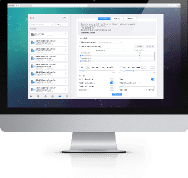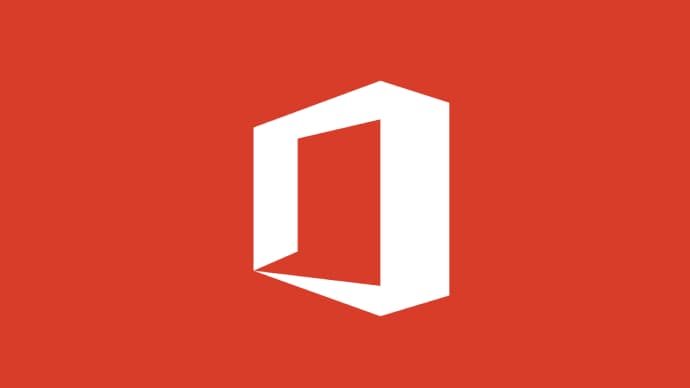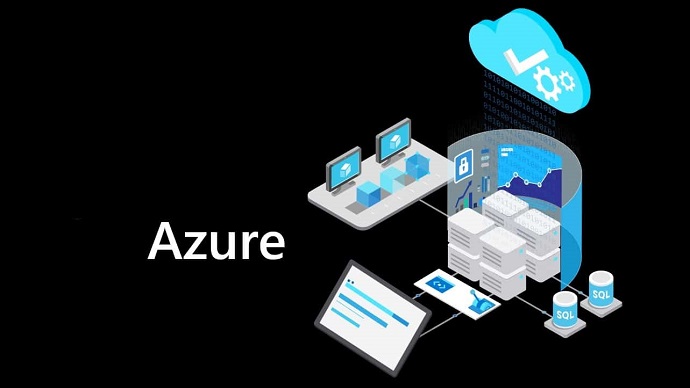Use VCE Exam Simulator to open VCE files

C_CPI_14 SAP Practice Test Questions and Exam Dumps
Question No 1:
What are some characteristics of SAP Integration Suite capabilities? (Choose two.)
A. SAP Open Connectors can be used to create iFlows in Integration Advisor.
B. APIs published in API Management can be used in iFlows in Cloud Integration.
C. SAP Open Connectors can act as an API Provider for API Management.
D. Integration Advisor can be used to automatically create iFlows in Cloud Integration.
Answer: B and D
Explanation:
The SAP Integration Suite provides a comprehensive platform to facilitate seamless integration between SAP systems, third-party applications, and other cloud solutions. It leverages various tools like Cloud Integration, API Management, Open Connectors, and Integration Advisor to simplify and automate the integration process.
Let's break down each option:
A (SAP Open Connectors can be used to create iFlows in Integration Advisor): SAP Open Connectors are designed to connect to third-party applications and services using pre-built connectors. However, Integration Advisor is focused on creating integration content for SAP-to-SAP and other integration scenarios, not specifically for creating iFlows. It provides mappings and business rules that help design and automate integration flows, but it doesn’t create iFlows directly using Open Connectors. So, this statement is not accurate.
B (APIs published in API Management can be used in iFlows in Cloud Integration): This is correct. API Management in SAP Integration Suite allows you to publish, manage, and secure APIs. These published APIs can be consumed in iFlows within the Cloud Integration module. This makes it easy to integrate and orchestrate APIs in end-to-end workflows across various systems and applications. Therefore, this is a valid characteristic of the SAP Integration Suite.
C (SAP Open Connectors can act as an API Provider for API Management): While SAP Open Connectors help to connect with third-party applications and expose their APIs, they are typically used as consumers of external APIs, not as providers. API Management is designed to manage APIs and provide governance, security, and monitoring of APIs. Therefore, Open Connectors are more likely to consume APIs rather than act as an API provider in the context of API Management. This makes the statement incorrect.
D (Integration Advisor can be used to automatically create iFlows in Cloud Integration): This is correct. Integration Advisor helps automate the creation of integration content, including iFlows, which are key components in Cloud Integration. By leveraging AI and predefined templates, Integration Advisor can automatically generate integration flows that can then be deployed and managed in the Cloud Integration environment, streamlining the integration process.
Thus, the correct answers are B and D because both describe accurate capabilities of the SAP Integration Suite in relation to API Management, Cloud Integration, and Integration Advisor.
Question No 2:
In SAP Cloud Integration, what converter options are available to convert a message from one format to another in one step? (Choose two.)
A. JSON -> XML
B. XML -> EDI
C. EDI -> CSV
D. CSV -> JSON
Correct Answers: A and B
Explanation:
SAP Cloud Integration (formerly SAP Cloud Platform Integration or CPI) offers various converters to handle the transformation of messages from one format to another. These converters allow data in one format to be mapped and transformed to another format, typically in a single step. Let’s examine the options:
This is a valid converter option in SAP Cloud Integration. JSON (JavaScript Object Notation) and XML (Extensible Markup Language) are commonly used formats for data exchange, and SAP Cloud Integration provides a built-in feature to convert from JSON to XML. This transformation is frequently used in scenarios where systems use different data formats for communication, and you need to convert from JSON (often used for APIs) to XML (often used in enterprise systems or for SOAP-based communication). This conversion is supported in SAP Cloud Integration.
This is another valid converter option. SAP Cloud Integration allows you to convert XML format to EDI (Electronic Data Interchange) messages. EDI is a standard format used for data exchange in industries like retail and manufacturing. The XML -> EDI converter helps map the structured XML data to an EDI format, which is used for business transactions such as purchase orders or invoices.
While it is technically possible to transform EDI data to CSV (Comma-Separated Values) format, this transformation is not a built-in converter option in SAP Cloud Integration. The typical use case for EDI is to convert it into more structured formats like XML, JSON, or other business document types, rather than directly into a CSV format. In SAP Cloud Integration, you would generally need to create a custom mapping for transforming EDI to CSV, rather than using a one-step converter.
Although CSV (Comma-Separated Values) and JSON are both widely used formats, there is no built-in one-step converter for directly converting CSV to JSON in SAP Cloud Integration. Like the EDI to CSV transformation, converting CSV to JSON would typically require a custom mapping or script rather than a built-in converter.
In SAP Cloud Integration, the valid built-in converter options that support a direct transformation in one step are A (JSON -> XML) and B (XML -> EDI). These converters are commonly used in integration scenarios to transform data between two widely used formats.
Question No 3:
Runtime artifacts generated by SAP Integration Advisor can be used in which middleware and runtime solutions? (Choose two.)
A. SAP Process Orchestration
B. SAP S/4HANA Cloud
C. SAP Cloud Integration
D. SAP S/4HANA
Correct answer: A, C
Explanation:
The SAP Integration Advisor is a tool used for configuring, designing, and generating integration content, such as mappings, interfaces, and other necessary runtime artifacts, for integrating SAP and non-SAP applications. These runtime artifacts are crucial for the execution of integration scenarios within middleware and runtime solutions. Now, let’s examine the two correct solutions:
SAP Process Orchestration is a comprehensive middleware solution used for integrating SAP and non-SAP systems. It provides capabilities for business process management, process automation, and system integration. The runtime artifacts generated by SAP Integration Advisor, such as mappings and configuration content, can be directly used within SAP Process Orchestration. This is one of the primary middleware solutions where these artifacts are deployed, enabling smooth integration across various systems.
SAP S/4HANA Cloud is an enterprise resource planning (ERP) solution, and while it supports integrations with other systems, it is not typically the runtime environment for integration artifacts generated by the SAP Integration Advisor. The generated artifacts are primarily designed for integration middleware systems, rather than directly being deployed into the S/4HANA Cloud environment itself. Thus, it is not a suitable runtime solution for these artifacts.
SAP Cloud Integration (formerly known as SAP Cloud Platform Integration or CPI) is a cloud-based integration middleware solution that enables integration between cloud and on-premise applications. Like SAP Process Orchestration, SAP Cloud Integration can use the runtime artifacts generated by the SAP Integration Advisor. These artifacts, including mappings and other configuration data, can be imported and deployed within SAP Cloud Integration to facilitate seamless integrations between systems.
SAP S/4HANA is an enterprise ERP suite, but similar to SAP S/4HANA Cloud, it is not a middleware or runtime platform where integration artifacts from SAP Integration Advisor are typically deployed. While S/4HANA systems might be involved in integrations, the integration artifacts themselves are not used directly within S/4HANA as a runtime solution.
The correct answers are A (SAP Process Orchestration) and C (SAP Cloud Integration). These are the middleware and runtime solutions where the runtime artifacts generated by SAP Integration Advisor are typically used for integrating various systems effectively.
Question No 4:
What are the advantages of implementing local integration processes? (Choose two.)
A. Limit complexity
B. Increase readability
C. Boost performance
D. Decrease modularization
Correct Answer: A, C
Explanation:
Local integration processes typically refer to the integration of systems or applications within a localized environment (e.g., within a specific part of a business or infrastructure). These processes are designed to streamline communication, reduce overhead, and ensure that interactions between local systems are optimized.
Let's break down the advantages and why A and C are the correct answers:
A. Limit complexity
Implementing local integration processes helps in limiting complexity because it keeps the integration scope confined to a localized environment. This reduces the number of dependencies and interactions with external systems or processes, making the system easier to manage and troubleshoot. The fewer the external dependencies, the simpler the overall architecture, making it easier to develop, maintain, and scale over time.
B. Increase readability
This option is incorrect. While local integration processes may help in organizing system components within a smaller scope, they do not necessarily increase readability. Readability is more about how easily the code or architecture can be understood, and local integrations don't inherently guarantee that the process is easier to read. In fact, integrating systems locally without considering broader architectural design might reduce readability if the code becomes too tightly coupled or difficult to follow.
C. Boost performance
This option is correct. Local integration processes can boost performance because they often reduce the need for extensive network communications or reliance on external systems. By keeping the integration processes within a localized environment, the overhead of network delays and external system calls can be minimized. This leads to faster processing and improved performance, especially when data or system interactions are frequent.
D. Decrease modularization
This option is incorrect. One of the key goals of local integration is to simplify the system while maintaining or even enhancing modularization. Local integration processes should not decrease modularization, but rather keep the different components modular so that they can be independently developed, maintained, and replaced without affecting the entire system. In fact, local integrations can often improve modularization by isolating specific functions or components within defined boundaries.
The main advantages of implementing local integration processes are to limit complexity (by reducing external dependencies) and to boost performance (by minimizing communication overhead with external systems). Therefore, A and C are the correct answers.
Question No 5:
Which capability of the SAP Integration Suite can you use to provide processed data to other applications and consumers?
A. SAP API Management
B. SAP Open Connectors
C. SAP Integration Advisor
D. SAP Cloud Integration
Answer: A
Explanation:
The SAP Integration Suite provides a comprehensive set of tools for integrating various systems and applications both within the SAP ecosystem and with external systems. Each capability within the suite serves a specific purpose when it comes to managing integrations, transforming data, and providing access to this data for other applications. Let’s analyze each option to determine which one is used to provide processed data to other applications and consumers.
A. SAP API Management:
This is the correct answer. SAP API Management is designed to expose, manage, and monitor APIs. It provides a way to securely expose processed data to other applications and consumers via APIs. APIs are often used to share data between applications in a standardized, controlled, and monitored manner. SAP API Management helps in defining, protecting, and scaling these APIs, making it ideal for providing processed data to other systems. With API Management, you can ensure that data is accessible in real-time and is properly governed, making it a perfect tool for sharing processed data.
B. SAP Open Connectors:
SAP Open Connectors enable integration with a variety of third-party applications and services by providing pre-built connectors. While Open Connectors can help in connecting external systems to SAP, they do not directly focus on providing processed data to other applications. Open Connectors are more about establishing connections and data flows between SAP and external systems, rather than providing processed data to consumers. Therefore, it is not the best choice for the question’s requirement.
C. SAP Integration Advisor:
SAP Integration Advisor is a tool used for automating integration content creation by recommending best practices and integration scenarios. It is primarily used for designing and configuring integration flows, but it does not directly provide processed data to other applications. Instead, it aids in creating the configurations needed for integration, so it’s not the right choice for providing processed data to consumers.
D. SAP Cloud Integration:
SAP Cloud Integration facilitates the integration of different SAP and non-SAP systems by providing a platform for creating, managing, and monitoring integration flows. It does process and transform data, but it is not specifically focused on providing that processed data directly to external applications. It integrates systems and handles the backend data flows. While SAP Cloud Integration plays a crucial role in data transformation and routing, SAP API Management is the better tool for exposing and providing processed data to external applications and consumers through APIs.
In conclusion, SAP API Management is the correct tool for exposing processed data to other applications and consumers because it enables the publication, security, monitoring, and management of APIs that make processed data accessible across various systems. Thus, the correct answer is A: SAP API Management.
Question No 6:
How is a message mapping created in SAP Integration Advisor? (MIG: Message Implementation Guideline, MAG: Mapping Guideline)
A.
1. Create Target MIG
2. Create Source MIG
3. Choose correct type system
4. Create MAG
B.
1. Create MAG
2. Choose correct type system
3. Create Target MIG
4. Create Source MIG
C.
1. Choose correct type system
2. Create Source MIG
3. Create Target MIG
4. Create MAG
Answer: C
Explanation:
In SAP Integration Advisor, creating a message mapping involves several structured steps to define how data will be transformed between the source and target formats. This process ensures that messages from one system can be translated into a format that another system can process.
Here’s a breakdown of the typical steps involved in creating a message mapping, which aligns with the correct answer:
Choose the correct type system:
The first step is to select the type system that defines the message structure or the format you are working with. The type system specifies the structure for the source and target message types. This step is critical because it determines the framework within which both the Source MIG (Message Implementation Guideline) and Target MIG are created. Without selecting the type system first, you wouldn’t know the structure of the messages you are working with.
Create Source MIG:
The Source MIG defines the structure of the incoming message. It provides details on the message type, elements, and data formats that are part of the incoming message. This step defines what the source system's message looks like.
Create Target MIG:
The Target MIG defines the structure of the message as it will be after the mapping process. It describes how the message should be transformed and what format the target system expects. The Target MIG is created after the Source MIG to ensure that you can align the source and target structures properly in the mapping process.
Create MAG (Mapping Guideline):
After the source and target MIGs are set up, you create the MAG. The MAG provides the actual logic for transforming the data between the source and target structures. This guideline contains the rules for the mapping and the transformation logic, ensuring that the correct data is transferred and formatted according to the target system's requirements.
This sequence ensures that the mapping process is structured and follows a logical flow: starting with selecting the type system (to define the message formats), followed by creating the source and target message definitions (MIGs), and finally, defining the mapping rules (MAG).
Thus, the correct order of steps for creating a message mapping in SAP Integration Advisor is C:
Choose correct type system
Create Source MIG
Create Target MIG
Create MAG
Question No 7:
What are some SAP Business Technology Platform features? (Choose two.)
A. Application development using SAP Extension Suite
B. Application development in SAP on-premise systems
C. SAP Analytics Cloud integration
D. Third-party database systems extension
Answer: A and C
Explanation:
The SAP Business Technology Platform (BTP) is a comprehensive suite of integrated solutions designed to help businesses transform and innovate. BTP brings together various technologies and services like data management, analytics, artificial intelligence, and more. It provides a unified platform for building, deploying, and managing applications. Let’s break down each of the options:
A. Application development using SAP Extension Suite: This is a key feature of SAP BTP. The SAP Extension Suite allows developers to extend, customize, and enhance existing SAP applications. It provides tools and services that enable businesses to create applications that integrate seamlessly with their SAP systems. This feature supports the development of custom applications that enhance and extend the functionality of SAP’s standard offerings.
B. Application development in SAP on-premise systems: While SAP does support on-premise systems for application development, this option is not a unique feature of SAP BTP. SAP BTP is more focused on cloud-based solutions, offering capabilities for cloud-native application development, integration, and scalability. On-premise systems are typically not the main focus of the BTP ecosystem, which is designed to leverage cloud technologies.
C. SAP Analytics Cloud integration: This is an important feature of SAP BTP. The SAP Analytics Cloud (SAC) provides business intelligence, planning, and predictive analytics capabilities. SAP BTP integrates seamlessly with SAC, allowing organizations to leverage powerful analytics tools alongside their data stored in SAP systems. SAC integration helps businesses gain insights and make data-driven decisions through real-time data access and analytics within the BTP ecosystem.
D. Third-party database systems extension: While SAP BTP does support various database integrations, its main focus is on SAP's own databases and cloud storage solutions. Extending third-party database systems might be possible, but it is not one of the primary features emphasized by SAP BTP, which is more about providing an integrated experience within the SAP ecosystem.
Therefore, the correct features of SAP BTP from the options provided are A. Application development using SAP Extension Suite and C. SAP Analytics Cloud integration, as both align closely with the platform’s capabilities to develop applications and integrate advanced analytics.
Question No 8:
Which of the following components are provided by SAP Business Technology Platform environments? (Choose three.)
A. Tools
B. Runtime
C. Applications
D. Systems
E. Services
Answer: A ,B ,E
Explanation:
SAP Business Technology Platform (BTP) is a comprehensive suite of integrated tools, services, and technologies that enable businesses to manage and integrate their data, applications, and processes. It provides a wide range of components to help organizations innovate and operate efficiently in a digital economy. Let’s explore the correct components provided by SAP BTP environments:
Tools (A): SAP BTP provides various tools to help businesses with application development, integration, and management. These tools include development environments, APIs, and design tools that support cloud-native application development and integration with various data sources and third-party systems. These tools help organizations create and deploy applications and services in the cloud.
Runtime (B): The runtime environment is a crucial component of SAP BTP. It provides the necessary infrastructure to run and manage applications in the cloud. It includes the execution environment that supports various programming languages, frameworks, and runtime engines, enabling businesses to run their applications seamlessly. The runtime environment is designed to handle workloads, ensure scalability, and support applications built with SAP or non-SAP technologies.
Services (E): SAP BTP offers a wide range of cloud-based services that support different business functions such as data management, analytics, artificial intelligence (AI), machine learning (ML), and more. These services help organizations automate processes, gain insights from data, and integrate various systems. Some examples of SAP BTP services include SAP HANA Cloud, SAP Integration Suite, SAP AI Core, and SAP AppGyver for low-code development.
Now, for the incorrect options:
Applications (C): While SAP BTP enables businesses to build and deploy custom applications, it does not directly provide ready-made applications. Instead, it provides the tools and services to create and manage those applications, offering the infrastructure and environment for development.
Systems (D): In the context of SAP BTP, the term "systems" is too generic and does not refer to specific components provided by the platform. SAP BTP provides infrastructure (runtime), services, and tools, but the platform itself is not focused on managing specific systems as standalone entities.
In conclusion, SAP Business Technology Platform environments provide Tools (A), Runtime (B), and Services (E) to support business processes, application development, and integration. These components help businesses create, manage, and scale their operations in the cloud effectively.
Question No 9:
Which SAP Cloud Integration process step allows you to run iFlows directly after deployment?
A. Message Digest
B. Content Modifier
C. Timer
D. Scheduler
Answer: D
Explanation:
SAP Cloud Integration provides various process steps and components to help design and execute integration flows, or iFlows, effectively within a cloud-based environment. The process steps used in an iFlow can perform different types of actions, such as modifying data, triggering events, or controlling the timing of processes. Let’s analyze each option in terms of its ability to run an iFlow directly after deployment:
A. Message Digest – The Message Digest step in SAP Cloud Integration is used to calculate a hash value for a message, which is often used for security purposes, such as ensuring data integrity. This process step is not related to controlling the execution or scheduling of iFlows. It simply performs a hashing operation and does not trigger the iFlow itself. Therefore, this step does not allow iFlows to run directly after deployment.
B. Content Modifier – The Content Modifier step allows the modification of message content within the iFlow. It is typically used to set headers, parameters, or modify the payload of messages as they pass through the integration flow. However, it is a processing step that modifies data and does not serve the purpose of triggering or scheduling the execution of an iFlow. As a result, the Content Modifier is not responsible for running the iFlow after deployment.
C. Timer – The Timer step is used in SAP Cloud Integration to introduce delays or to set up intervals for recurring tasks. While this step is used to control timing within an iFlow (for example, to wait for a set duration or run periodically), it does not automatically trigger the execution of an iFlow immediately after deployment. It helps with scheduling tasks within the iFlow, but it does not act as the initial trigger to run the iFlow post-deployment.
D. Scheduler – The Scheduler step in SAP Cloud Integration is specifically designed to schedule the execution of iFlows. This step allows you to run the iFlow at specific times or intervals, and it can be configured to start an iFlow immediately after it is deployed, making it the correct choice for running iFlows directly after deployment. The Scheduler is used to set up triggers for when and how often the iFlow should execute, which is key to automating integration processes in the cloud.
In conclusion, the Scheduler step is the one that allows an iFlow to run directly after deployment, providing the necessary control for scheduling and triggering iFlows in SAP Cloud Integration. Therefore, the correct answer is D.
Question No 10:
What happens to the log level of an iFlow when this iFlow is deleted from the system?
A. The log level is set to None.
B. The log level is removed.
C. The log level is kept.
D. The log level is set to the default value.
Correct answer: B
Explanation:
In the context of an iFlow (integration flow) in an integration platform like SAP Cloud Platform Integration (CPI) or similar environments, deleting an iFlow typically results in the removal of all associated configurations, including the specific settings for the log level of that iFlow. The log level refers to the verbosity of the logs generated during the execution of the iFlow, which can range from detailed logs to only showing errors, depending on the configuration.
When an iFlow is deleted from the system, the log level associated with that iFlow is also removed because it is tied directly to the lifecycle of the iFlow. The log level settings are no longer relevant once the iFlow is deleted since it no longer exists in the system to generate logs. Therefore, the correct answer is that the log level is removed.
Let's examine the other options and why they aren't correct:
A. The log level is set to None: Setting the log level to None is a common practice to suppress logging for specific flows or services. However, this doesn't occur automatically when the iFlow is deleted. If the log level were to be set to None, it would need to be manually configured, not triggered by deletion.
C. The log level is kept: The log level configuration is typically stored as part of the iFlow’s settings in the system. Once the iFlow is deleted, the configuration—including the log level—is also deleted, so it is not kept after deletion.
D. The log level is set to the default value: Setting the log level to a default value is often the result of a reset or reconfiguration, but it does not happen automatically when an iFlow is deleted. The deletion process removes the log level setting rather than resetting it to a default.
In summary, when an iFlow is deleted from the system, the associated log level configuration is removed, as it is no longer necessary for a non-existent iFlow. Therefore, the correct answer is B.
Related Exams

Top Training Courses











SPECIAL OFFER: GET 10% OFF
This is ONE TIME OFFER

A confirmation link will be sent to this email address to verify your login. *We value your privacy. We will not rent or sell your email address.
Download Free Demo of VCE Exam Simulator
Experience Avanset VCE Exam Simulator for yourself.
Simply submit your e-mail address below to get started with our interactive software demo of your free trial.